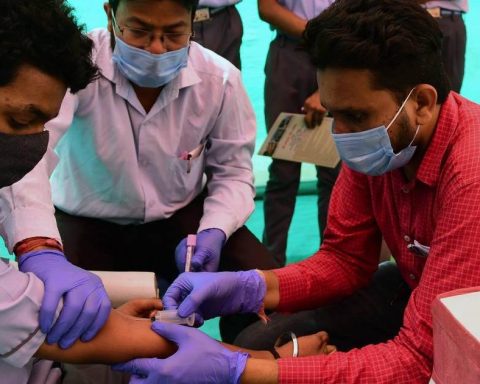Bancolombia’s Economic, Sectoral and Market Research Department presented its quarterly report on the country’s agricultural sector. In it, it revealed that Although agricultural GDP growth is advancing significantly, its dynamics are not consistent.
(See: Falling producer prices exacerbate the dairy crisis in the country)
This, taking into account that, excluding coffee, other crops were the ones that drove the result of 5.8% growth in the agricultural economy in the second quarter. The subsectors (excluding coffee) contributed 63% of the total increase.
“This is a figure that was difficult to expect, given that in highly relevant activities such as corn (yellow and white), rice, sugar cane and African palm, production declines have been observed.“, they say.
(Read also: Fedegán calls on the Ministry of Agriculture and the Ministry of Commerce to address the dairy crisis)
According to data from Dane with analysis by Bancolombia, during the second quarter of this year Crops such as sugar cane reduced their production by 19.3%, followed by a 12.9% drop in rice, compared to the same period in 2023.
However, lPositive contributions were made by fresh or dried legumes, which grew by 34.9%. from April to June, followed by Parchment coffee which rose 31.8%, citrus fruits with 23.6% and flowers which increased 13.3%.
Meanwhile, the livestock sector accelerated its growth in the midst of a complex moment due to the dairy crisis that the country is currently experiencing. Within this sector, The sector that has seen the most consistent growth is pig farming.
(See: Sectors that drive agricultural GDP are not in the interest of the Government)
In detail, pork production in the second quarter was 9.9%, compared to the same time in 2023. However, The other side of the coin reflects that despite the 6.4% growth in dairy production, the collection data reflects an increase of 0.3% in the purchases of the formal dairy industry in those three months.
Agriculture
iStock
One of the aspects to highlight within the increases in the agricultural economy is the favorable dynamics of international sales that are helping to grow the GDP of this sector. Thus, The total tonnes of agricultural, food and beverage products exported during the second quarter were 14.2% higher than in the same quarter of 2023.
(See more: Call for applications for farmers under 35 years of age: what does it involve?)
“The decreases in production and the difficulties of some agricultural sectors focused on the local market suggest that productivity in new export crops, which are maturing, have very possibly become a fundamental factor in the GDP of agriculture.or,” they explained.
However, lClimate variability becomes a factor of concern and uncertaintytaking into account that with more frequent El Niño and La Niña cycles, the GDP figures for this sector are likely to become increasingly erratic between periods of impact and recovery, according to the group’s projections.
(See: Brazilian productivity displaces Colombian livestock exports)
“This creates a challenge in determining, based solely on GDP figures, whether or not the sector is moving in the right direction.“, they say.

Agriculture
iStock
Local situation
Within the report, Bancolombia analysts explained that the consequences of the high increase in prices in previous years are currently being paid.which although they are currently on a downward path, part of the problems left by inflation is the lack of consumption.
(Read also: Get ready: La Niña phenomenon could intensify rainfall in the last quarter of 2024)
For example, dairy product purchases are the hardest hit, since analyzing the data from 2022, the industry is the only one, within processed foods, that has accumulated three years of decline in real sales. -0.5% in 2022, -6.4% in 2023 and -5.2% as of June this year.
Another case is the figures for Bancolombia cardholders, which show that consumption has been affected, since the Group’s real-time commerce report for July shows consumption in negative territory. From his perspective, restaurant purchases registered a real variation of -4% during July, as did supermarkets and neighborhood stores with -2%.
(See: Fenalce warns of a decrease in planted area and uncontrolled imports)
They add that Health taxes have contributed to the increase in food prices. “The most visible result on this front has been the increase in the prices of meat products. While the annual inflation in July for chicken, beef and pork (non-taxed products) was 2.3%, 0.5% and 0.7%, respectively, that of prepared meats was 15.5%; with this, the industry has accumulated a 3.7% drop in real sales this year,” they point out.

Agriculture
iStock
Agro-export sectors
In this matter, It was explained that US$1 out of every US$5 exported by the country comes from the agroindustry. In this sense, the fruit boom is what is driving the growth of international agricultural sales.
(Read: Petro explains how his proposal to implement forced investments would work)
“During the second quarter, agricultural and agro-industrial exports increased by 11.6% in dollars compared to the same period in 2023, driven mainly by fruit sales which, according to Dane, increased by around 40%, contributing 80% of the increase in exports.“, they point out.
With the exception of mango, fruits other than avocado and lemon slow down their growth. For example, Within the basket of exportable fruits, cape gooseberry, pitahaya and pineapple registered decreases or figures close to 0% so far in 2024. On the other hand, mango exports, in tons, grow by more than 20%, after increasing 25% in 2023.
(See more: Agricultural growth, more due to external factors than productivity)
On the other hand, the flower sector shows growth outside of special dates. Thus, during February and May, peak months for Valentine’s Day and Mother’s Day, Exports to the United States increased by 25% and 15% in volumesrespectively. “However, during the rest of the year, exports have increased by an average of 9%,” they conclude.


















